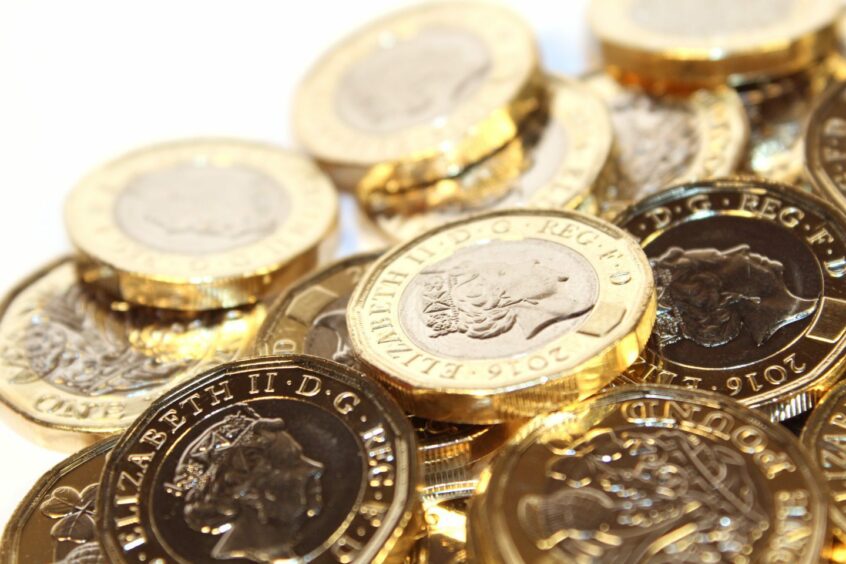With His Majesty King Charles III ascension to the throne, there will be a number of subtle and less subtle changes to our lives.
A new insignia, or cypher or emblem featuring the design of his reign will be used to represent the monarchy on a number of UK administrative and institutional organisations.
Among the many places in which the insignia or cypher is used are on every postage stamp and parcel the Royal Mail delivers. It is on post boxes, on every piece of currency used in the UK.
On the official uniforms of the police and other emergency services, or military personnel and in the title of many organisations whose foundation was in royalty.
In every passport, it is in the name of Her, now His Majesty, that allows people to travel without hindrance around the globe.
What is a royal insignia or cypher?
The Royal insignia represents the monarch’s reign and previously featured Queen Elizabeth II’s ERII stamp, standing for Elizabeth Regina.
Over time, the insignia of Queen Elizabeth II denoted as ER or Elizabeth Regina, will be changed to Charles R or Charles Rex.
The royal cypher and Latin term Regina is reserved for the female monarchs while Rex is for the male monarchs.
The insignia has become an image across the globe of the British monarchy and part of our national identity.
Will King Charles’ insignia be changed?
Clarence House, who spoke on the subject back in March, said that there would be no plans to make any changes until Charles came to the throne.
It had been previously reported that King Charles III is planning to bring back a Tudor tradition to his insignia.
His Majesty is said to be thinking of changing the royal insignia, which features on some official uniforms and the Royal Mail logo, upon his coronation.
Which could mean a delay in the new insignia being featured, until his coronation which will be months if not a year or more in being held.
The current royal insignia represents the monarch’s reign and currently features Queen Elizabeth II’s ERII stamp, standing for Elizabeth Regina the second below an image of the St Edward’s Crown.
The Tudor Crown last appeared on the royal insignia with King George VI who is King Charles’ grandfather who used the crown for his design while he was on the throne for 15 years.
Royal Mint
Every coin in circulation across the country features either the current portrait of the Queen or an earlier version.
It is understood we won’t see any King Charles III coins until next year, due to the huge task of preparing them.
When they are ready, he will be facing to the left, the opposite of the Queen, following the convention of changing sides from monarch to monarch.

In a statement the Royal Mint said: “Following the incredibly sad news of the passing of Queen Elizabeth II, we are currently experiencing a particularly high volume of traffic to our website. Please bear with us as we manage this.
“Queen Elizabeth II ruled with heart and devotion, and will be dearly missed by all of us at The Royal Mint and by millions of people around the world.
“The remarkable legacy of Britain’s longest serving monarch will live on for many years to come.”
Royal Mail post boxes
Since their introduction in 1852, post boxes have carried the insignia, or cypher, of the monarch reigning at the time of placement.
The ‘EIIR’ mark of Queen Elizabeth II is now the most commonly seen in the UK, featuring on more than 60% of postboxes.
Around 15% of current boxes are from the reign of George V and then in descending order, George VI, Victoria, and Edward VII.
There are still 171 boxes surviving from the short 1936 reign of Edward VIII.
It is not know whether new post boxes to celebrate the reign of King Charles III will be installed immediately or after the coronation.
Stamps
Royal Mail’s design classic of Her Majesty The Queen, designed by renowned sculptor and artist Arnold Machin, was first issued at the 4d value on June 5 1967.
Since it was first issued, the portrait has been reprinted an estimated 220 billion times, in more than 130 different colours, and is considered to be one of the most reproduced images in the world.
The Royal Mail has not issued any designs on what the King’s profile will look like, or said when the first stamps will be released.
A Royal Mail spokesperson said: “There are no plans to change the Royal Mail logo, which is recognised globally as an iconic British brand. We have been advised that the King wants as little unnecessary expenditure or waste as possible as a result of the transition. Our logo will remain the same.
“In line with past practice, following the death of a monarch all existing post boxes will remain unchanged.
“Post boxes already in production or being prepared for installation, will also retain the insignia of Queen Elizabeth II.”
Passports
On the inside cover of the British Passport it reads: “Her Britannic Majesty’s Secretary of State requests and requires in the name of Her Majesty all those whom it may concern to allow the bearer to pass freely without let or hindrance, and to afford the bearer such assistance and protection as necessary.”
Passports will remain valid, and a statement will be made in due course.





Conversation